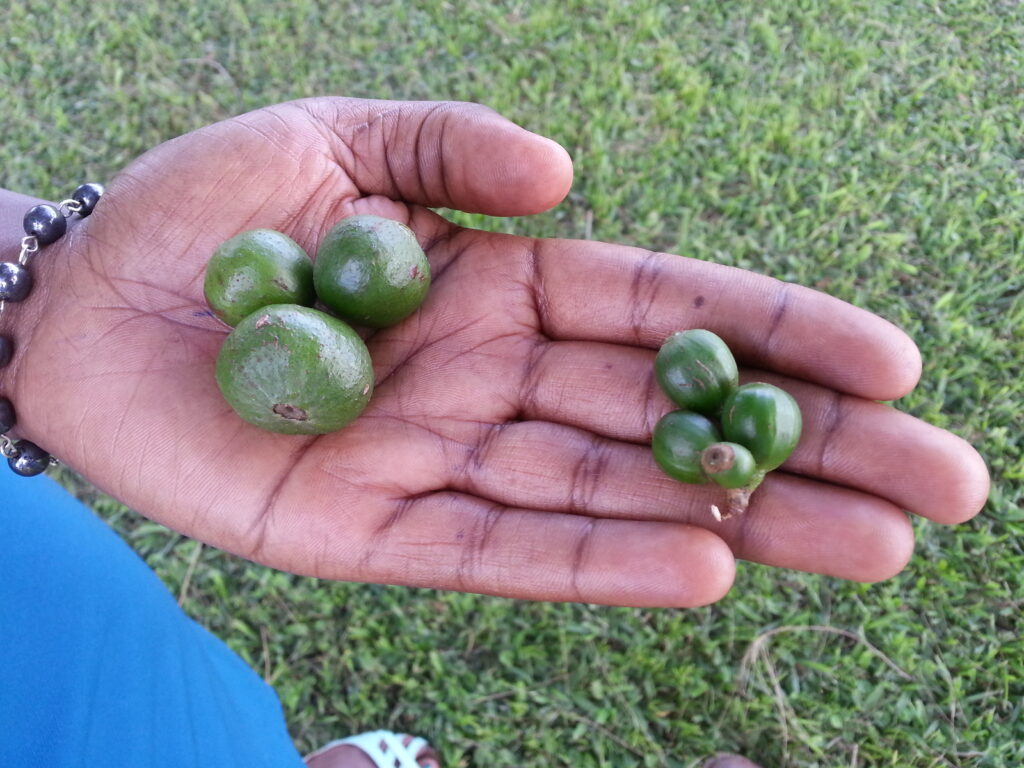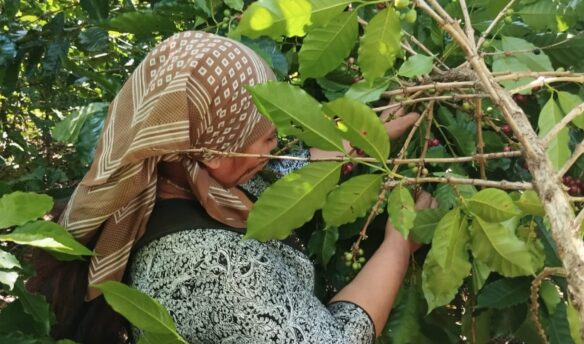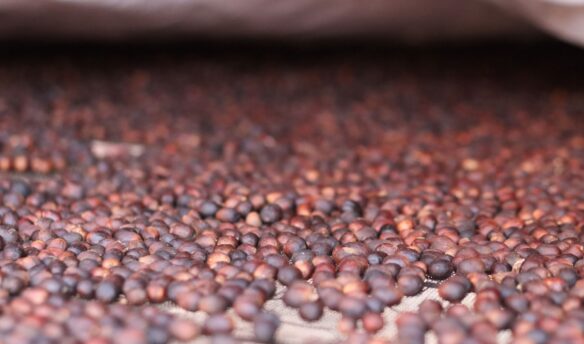In the late 1870s, farmers across Southern and Southeast Asia were battling an outbreak of coffee leaf rust that devastated arabica crops, the world’s dominant coffee cultivar. Soon, Coffea Liberica, aka liberica, a coffee species from Africa that was hardier and disease-resistant, emerged as a potential replacement for dying arabica plants. By the end of the 19th century, liberica rivaled arabica as the world’s primary coffee species, and some considered liberica the natural successor to arabica.
That succession never happened, but now, as climate change poses an even greater threat to coffee, some are looking again to liberica—or more specifically, its variant excelsa—as a possible solution.
Coffee Under Threat
As the planet heats, unpredictable and extreme weather patterns put increased strain on agriculture—especially crops that require stable temperatures and reliable rainfall like coffee. A report from the Inter-American Development Bank states that “rising temperatures will reduce the area suitable for growing coffee by up to 50% by 2050.”
One of the reasons climate change poses such a severe threat to coffee is that arabica is still the dominant species and remains just as vulnerable as it was in the 1870s. Arabica (Coffea arabica) accounts for around 55% of global coffee production and is greatly affected by changing temperatures—to thrive, arabica needs cool temperatures and stable rainfall patterns. When it comes to other coffee species currently being cultivated, there aren’t many options: robusta (Coffea canephora) makes up most of the additional 45% of coffee grown, and while hardier and more fruitful at lower elevations than arabica, it is generally assumed to be inferior in quality.
Climate change isn’t just a problem for the future—it’s already had a devastating effect on coffee. Extreme weather events such as droughts and snap frosts have impacted harvests in coffee-growing regions worldwide. Climate-related disasters, coupled with supply chain shocks, have caused the commodity price of coffee to fluctuate wildly over the last few years, and many coffee farmers have abandoned coffee farming altogether.
The climate crisis, and the volatility that it causes, have prompted coffee researchers to explore possible agricultural alternatives. Some have taken a page from coffee’s history books: a recent article in the journal Nature Plants gives new attention to liberica, specifically a variant called excelsa, as a potential solution to mitigate the effects of climate change on coffee.
“We need options, other than Arabica and robusta, under a changing climate,” says Aaron P. Davis of the Royal Botanic Gardens in the United Kingdom, the report’s lead author. Davis has studied coffee for over two decades, has written extensively on the vulnerability of coffee and climate change, and is now looking to liberica and its potential to grow in a warming world. “If Arabica and robusta production is compromised by climate change, Liberica and excelsa could be used to address the shortfall.”
A Tumultuous History
Indigenous to tropical West and Central Africa, liberica was first cultivated commercially in the early 1800s. In the late 1870s, coffee leaf rust was wreaking havoc across Asia. The disease is caused by the fungus Hemileia vastatrix and is characterized by yellow spots and orange powdery lesions, denuding plants of their leaves. Liberica was a possible solution for producers whose crops were being decimated by arabica: it was robust and high-yielding, suited to growing at lower elevations and warmer conditions than arabica. Most importantly, liberica seemed to have some resistance to disease and pests.
Despite its hardiness, liberica never overtook arabica as the world’s principal coffee crop due to issues with processing and taste. The fruit of the liberica plant (which surrounds the coffee seed and must be removed) was large and had tough skin, making processing difficult and resulting in poor quality and an unusual flavor profile. At the same time, farmers realized that robusta was even more resistant to disease and lacked a distinct flavor profile, making it easier to blend with arabica and thus preferable to liberica.
Although it fell from favor globally, liberica continues as a commercial crop in Southeast Asia, particularly in Malaysia, where it dominates coffee production, and the Philippines, where in the form of Kapeng barako, it has been a cultural staple for generations.
Do Call It A Comeback
While liberica is still grown in small quantities in Southeast Asia, its modern reevaluation is focused on a subvariety, excelsa, discovered in the early 20th century. Excelsa is notable for its high yield—in some countries, similar to or exceeding robusta and arabica—and ease of processing. Compared to liberica’s large fruit and thick skin and pulp, excelsa’s smaller fruit size means processing stations can use existing equipment, and the cherry’s thinner pulp makes drying more uniform. Like its parent, excelsa can be grown at low elevations and in relatively warm climates.
In his report, Davis worked with a team of researchers from the UK and Uganda to examine the history of liberica and observed commercial cultivation and wild populations of liberica and excelsa in several countries. Specifically, they studied over 200 farms in Uganda, where many farmers are already growing excelsa and have switched from planting robusta to either a mix of the two or just excelsa alone.
The paper indicates that the transition to excelsa has been driven by producers rather than external stakeholders. In Uganda, for example, farmers appear to be planting more excelsa plants in response to problems with robusta, specifically issues with disease, drought, and pests. The authors describe excelsa yields as “respectable to substantial” and meet or exceed outcomes for similar-elevation robusta plantings.
Importantly, excelsa appears to be resilient to the two main challenges facing coffee production: disease and climate change. The authors note that excelsa has “partial resistance” to coffee leaf rust, offering the potential to breed more rust-resistant varieties. Other potential benefits include possible resistance to coffee berry borer and, according to farmer feedback in Uganda and South Sudan, little susceptibility to coffee berry disease and coffee wilt disease.
Crucially for commercial application, liberica and especially excelsa have the potential to be tasty. “Liberica and excelsa are capable of producing a wide range of cup profiles, including those approaching Arabica,” Davis says. He points out that the caffeine content of liberica and excelsa are similar to arabica, as opposed to robusta, which has almost double the caffeine content. With its similar caffeine profile, excelsa can easily be sold as a standalone coffee, making the subvariety more attractive to buyers and more valuable for producers.
“There are an increasing number of roasters buying, or wanting to purchase, Liberica and excelsa,” Davis says. “We are only at the beginning of understanding the potential of Liberica and excelsa.”
As the world grows hotter and its weather less predictable, demand for coffee increases. By one estimate, demand will double by 2050; another predicts production will need to triple to meet demand. More coffee will have to be grown on ever less suitable land. As the authors conclude, “we will need to be proactive in the development and establishment of alternative coffee crop species, which are able to exist under markedly altered climatic conditions. Liberica and excelsa coffee may provide part of the diversification required to achieve this objective.”
Photos courtesy of Aaron Davis.


















